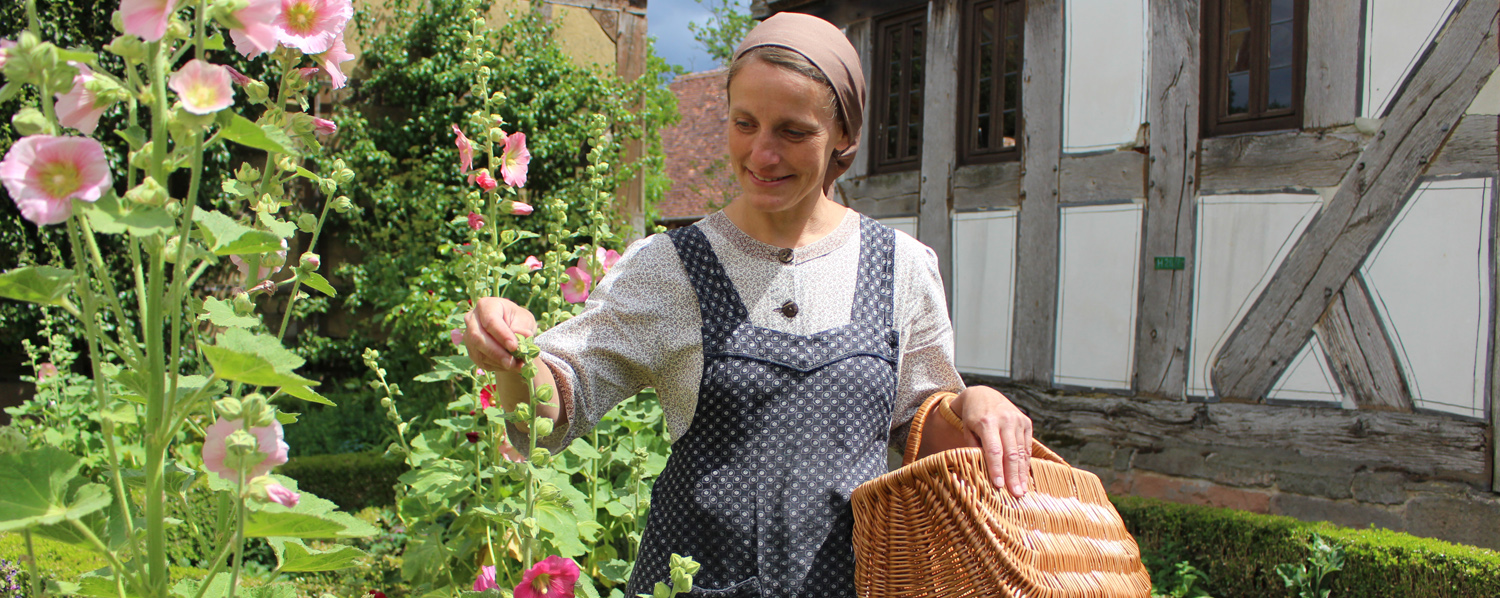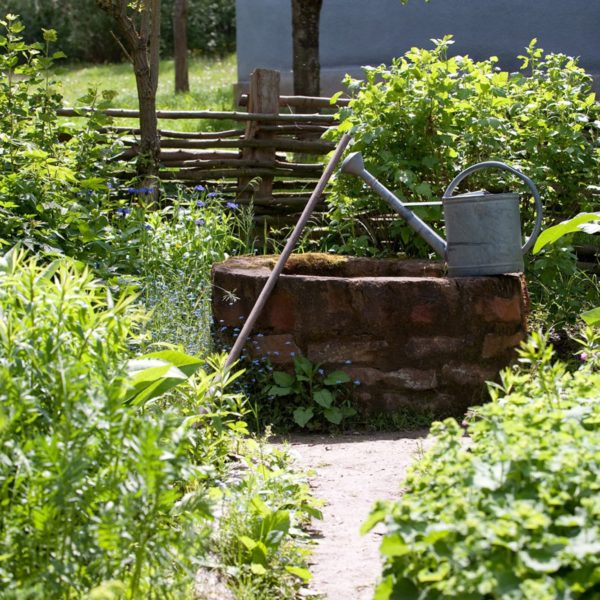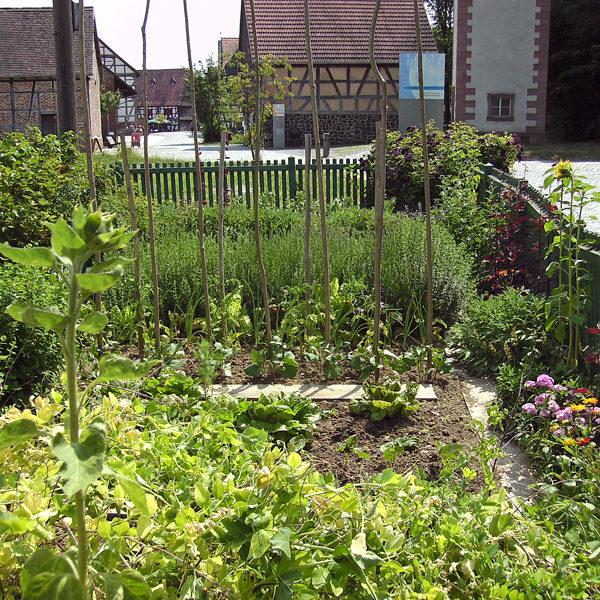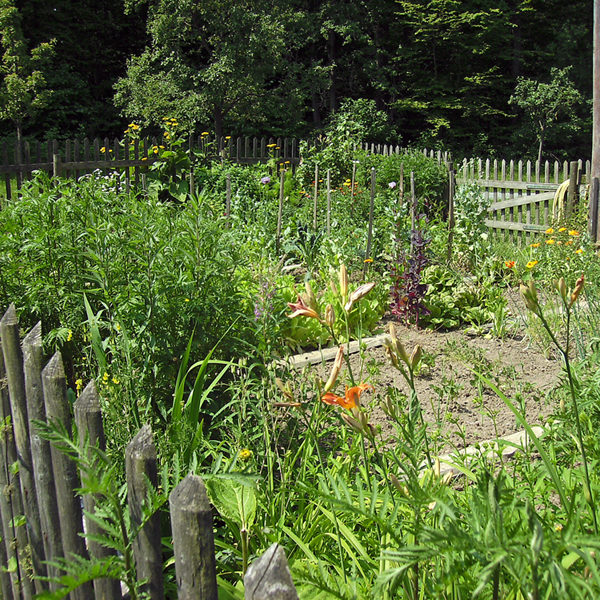Rural Gardens and Kitchen Gardens

The reconstruction of gardens and kitchen gardens is of special interest to the Open Air Museum, since the ways they were planted and used give many clues helping us to better understand the needs, desires and woes of the rural population.
Unfortunately, when buildings were transferred to the museum, the gardens that surrounded them were only very rarely thoroughly documented. Nowadays, we make a special effort in this regard in order to preserve the cultural heritage inherent in the garden plants and beds. Plant types and varieties play a special part in this work. Some of the heirloom varieties are on the verge of dying out or only available from gene banks. Other old fruit and vegetable varieties, grown and propagated by farmers for centuries, have already been lost to us. This is why we work towards preserving this cultural heritage, by seeking for those old varieties that have survived and by targeting them for cultivation and propagation.
The diversity in gardens is astounding, reaching from fruit trees to medicinal and aromatic plants to vegetables, lettuces and a colourful array of decorative plants. A country kitchen garden mainly served to improve the home’s food supply, but medicinal and aromatic herbs were important, too, as were flowering perennials and decorative shrubbery.
Besides historic gardens and kitchen gardens, we have also planted themed gardens to give visitors an impression of the variety available within certain types of plant. In the Central Hesse Ensemble, there is a garden filled with herbaceous medicinal perennials next to the House from Heskem, and a herb garden with perennial aromatics between the Gatehouse from Betziesdorf and the Barn from Bracht. This herb garden is completed by a number of trellised fruit trees grown on the walls of selected buildings. This is how trees would have appeared up to around 1900 in gardens and especially on the roadside walls of buildings. In the Northern Hesse Ensemble, there is a garden where various dye plants are grown. In the nearby House from Ostheim, fabric dyeing is demonstrated at specified times. Visitors can regularly participate. Workshops and special programmes for children’s birthday parties are also available.




Mit dem Laden der Karte akzeptieren Sie die Datenschutzerklärung von Google.
Mehr erfahren




